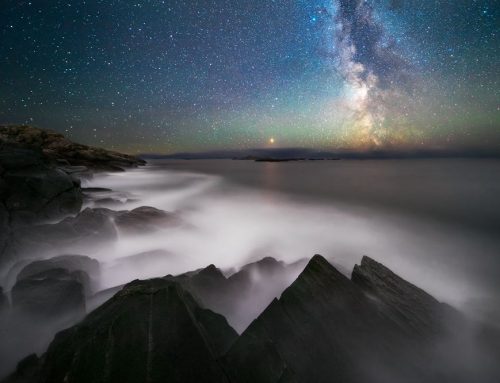
It is a long standing debate between certain groups of landscape photographers whether to use filters or to simply take more images in the field and achieve the same result in post processing. My key message is that there are advantages and disadvantages to both approaches, therefore adapting to each situation before you instead of staying dogmatic to a principle will benefit your ability to create images.
Here is a table considering certain aspects of shooting which favour either the filter approach, or shooting multiple frames and post processing images to achieve the desired result.
| Situation: Using a CPL | |
| Filters | The effect of glare reduction (especially when shooting forest scenes) is not easily replicable in post processing. |
| Post Processing | Attempting to ‘burn’ areas of brightness does not achieve the same result as a simple twist of a CPL |

@ Albert Dros Shot with NiSi Landscape CPL
| Situation: Using ND fiters | |
| Filters | Certain effects are not replicable in post processing. This is particularly the case when using long exposures to create patterns such as with flowing streams. |
| Post Processing | Using the ‘average’ method of stacking multiple shorter exposures can simulate a long exposure, but only for a smoothened appearance. For instance, the effect of flowing bubbles in a stream using a ND filter shot at 20 seconds appears vastly different to 20 stacked 1 second images. |

@ NiSi UK
Photo on the left ND filter simulated
Photo on the right Shot with real ND filters
| Situation: Balancing exposures with moving subjects | |
| Filters | Filters have an advantage if able to help capture a scene’s dynamic range in a single picture if there are moving elements which appear different with differing shutter speeds. The prime example of this is moving water. |
| Post Processing | Blending moving water images is extremely difficult, especially when using differing shutter speeds to capture the dynamic range of a scene. For instance, blending a 1 second image with a 0.25 second image (2 stops apart) will look unnatural for flowing water. |

@ Fakrul Jamil Shot with NiSi ND 64 + GND 8 + Landscape CPL
| Situation: Using a Natural Night filter | |
| Filters | Certain elements are not easily reproducible with post processing such as the actual glare of yellow street lights. However, the caveat here is that Natural Night filters block 1 stop of light meaning a potential increase in ISO is required. |
| Post Processing | Most of the effects of a Natural Night filter can be achieved by altering white balance and adjusting hue/saturation of the red channel. |

@ Brendan van Son
Photo on the left Shot without Natural Night filter
Photo on the right Shot with Natural Night filter
| Situation: Scenes with irregular light sources | |
| Filters | Use filters with caution in scenes like this as the filter lines will be easily visible. If there are objects breaking through the horizon or the light source is in various points (such as a forest scene), I would avoid using GND filters entirely. |
| Post Processing | This is a clear advantage for multiple exposure blending providing you are familiar with using techniques such as luminosity masks to help with post processing. |
The NiSi 10 Stop Filter Changed Everything – Minimal Long Exposure Sunset Photography
by Dylan Toh





